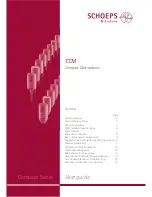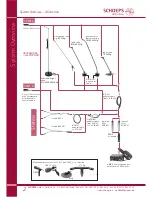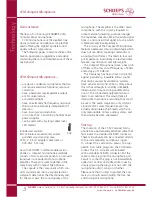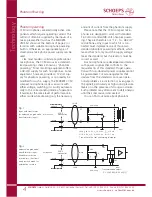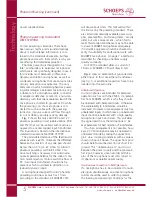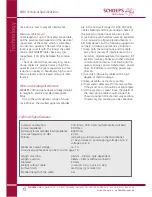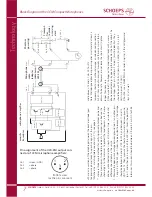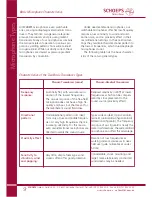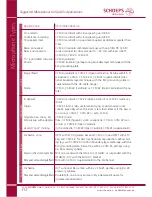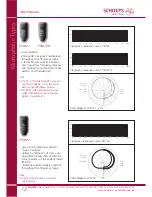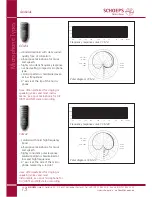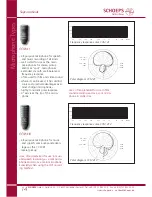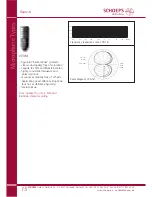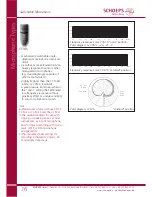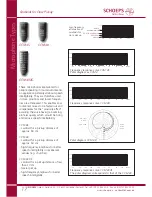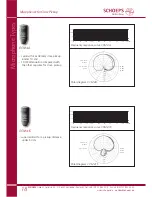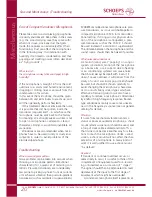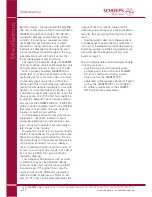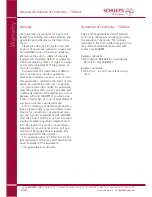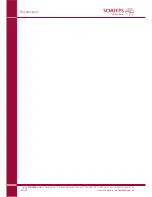
Which is the best microphone for ... ?
In our opinion a good microphone ought to
sound natural, just as you would expect a
good audio amplifier to sound; it should
therefore be suitable for any instrument. This
requires flat frequency response and a direc-
tional characteristic independent of frequency.
There will be no difference in sound quality
whether the pickup is on- or off-axis.
Obviously this ideal can only be achieved to
a finite degree. With directional microphones,
proximity effect causes the low-frequency
response to vary significantly while with nearly
all microphones (especially omnidirectional
microphones), the polar pattern is rarely ideal
at the highest frequencies.
Only in rare cases can ”the” correct micro-
phone be chosen unequivocally, since – based
on experience – aspects of taste, recording
location, position of sound sources and the
microphone, and the atmosphere of the music
or other program material must also be con-
sidered. Any absolute recommendations would
therefore be of limited value at best. How ever,
we would like to offer some ideas that offer a
good place to start.
Our Recommendations
The microphone type that comes closest to
the theoretical ideal is the classic pressure
transducer. It has an omnidirectional pickup
pattern, reproduces even the lowest audio
frequencies with full sensitivity, and has no
proximity effect.
The most commonly used pattern for
medium-distance pickup is the cardioid (CCM 4
or CCM 4V). However, there may be good
reasons to make a different choice. Some
examples:
– increased directivity may be required, either
for the sake of a ”drier” recording or for
suppressing sound from adjacent instruments.
In this case we recommend the super cardioid
CCM 41 or shotgun microphone CMIT 5 U,
as long as no nearby sound source or P.A.
loudspeaker is directly behind the micro-
phone, since it has a rear lobe.
– for a broader pickup pattern, with very nat-
ural sound quality for sound arriving at the
sides of the microphone and more extended
low-frequency response, we recommend
the CCM 21 wide cardioid.
– for a very natural sound character and a
pickup pattern close to a cardioid: CCM 22
Open Cardioid
– for essentially perfect pickup of low-fre-
quency information and room sound, we
recommend the omnidirectional CCM 2H
or CCM 2S.
– when using directional microphones with
very close placement, proximity effect must
be compensated for with a bass rolloff. This
is especially true when miking instruments.
For voice, try the CCM 4S or CCM 4VXS.
For instruments the omnidirectional CCM 2
may be of interest (no proximity effect, low
sensitivity to ”popping” or solid-borne
noise).
– for very distant miking with essentially per-
fect bass response and/or as an ”ambience”
microphone: omni CCM 3.
– for outdoor recording if directivity is not
required (e.g. close miking), the omni
CCM 2S + windscreen W 5 or W 5 D will
offer low sensitivity to wind, “popping”
and handling noise.
If high directivity is required outdoors, the
CCM 41 can be used with the W 5 D,
WSR 100 or WSR MS LI “basket”-type
windscreens with built-in elastic suspension
for mono or stereo.
SCHOEPS
GmbH · Spitalstr. 20 · D-76227 Karlsruhe (Durlach) · Tel: +49 (0)721 943 20-0 · Fax: +49 (0)721 943 2050
www.schoeps.de · [email protected]
Microphone Selection
8
Recording

